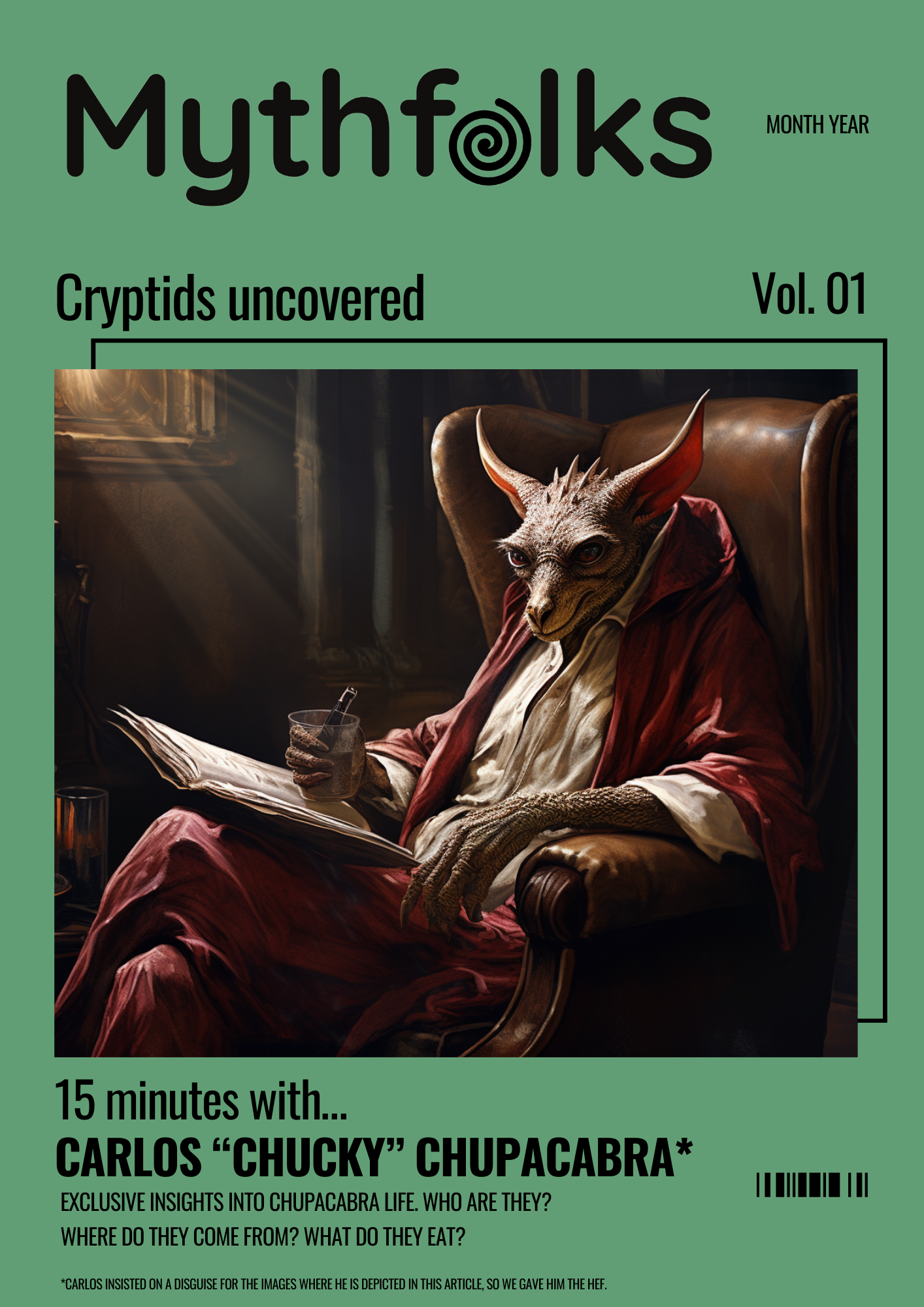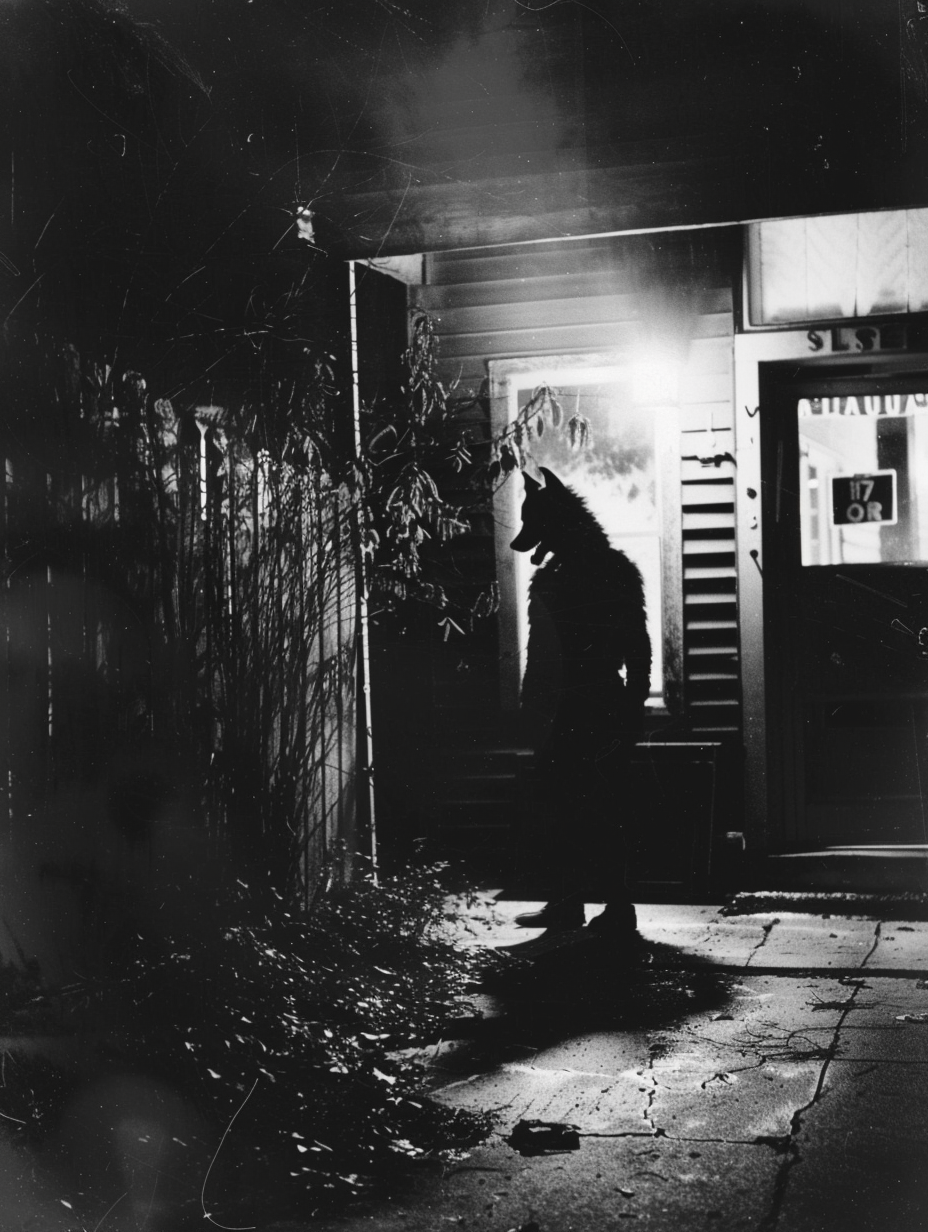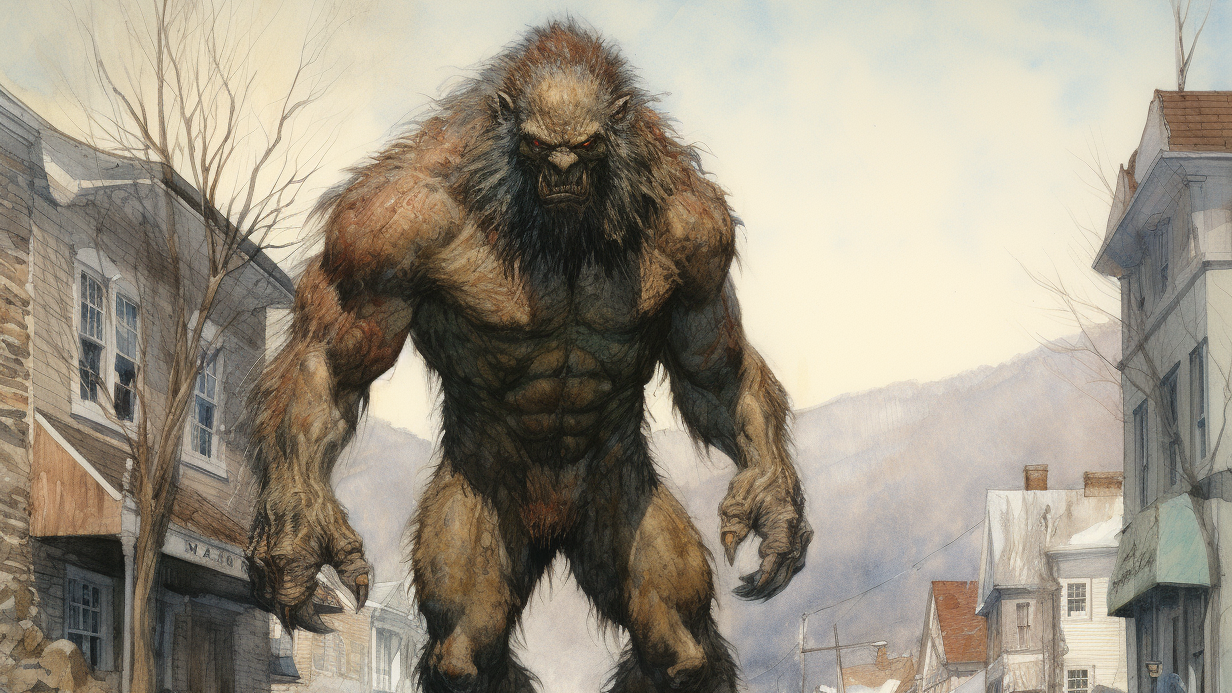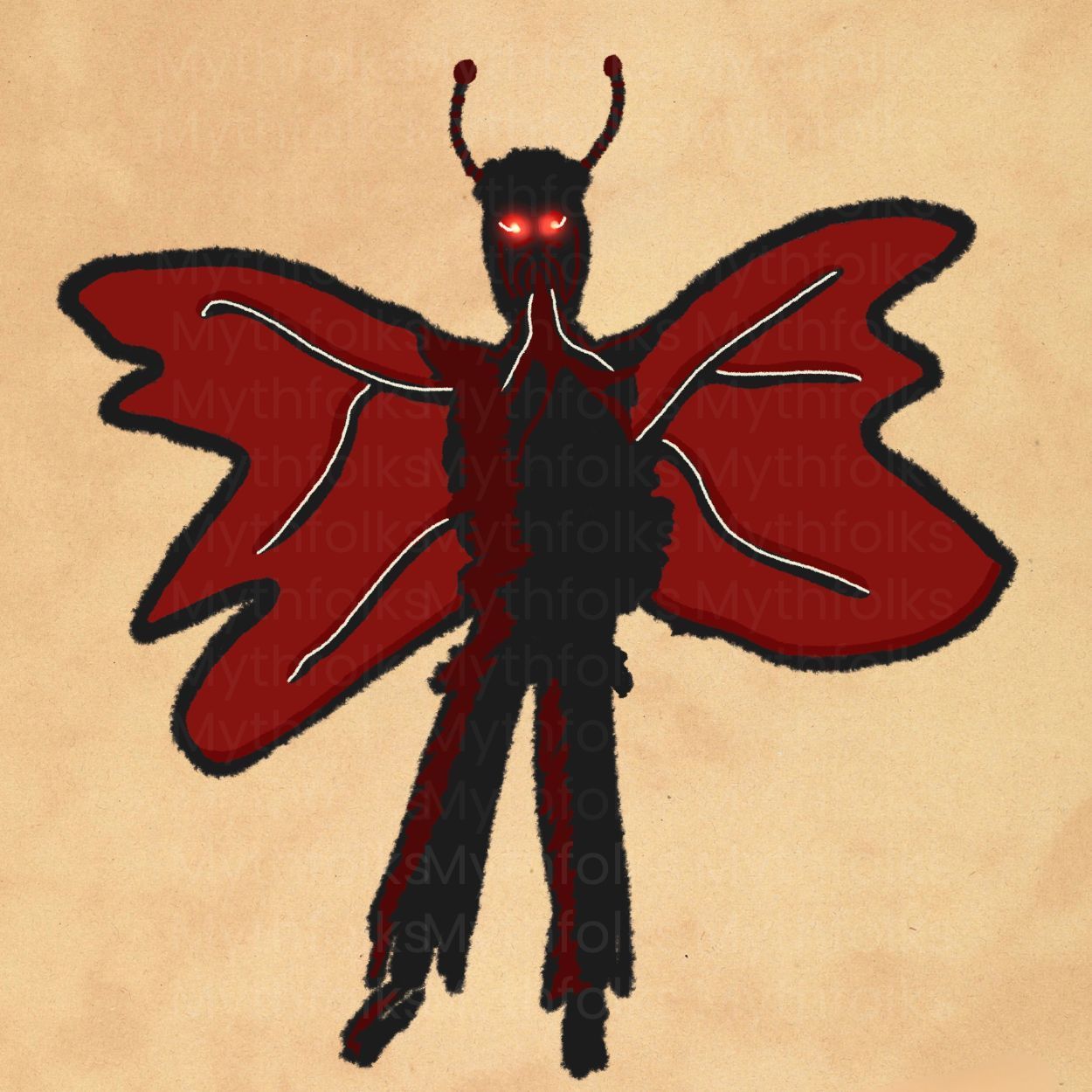On a calm August day in 1817, something stirred in the waters off Cape Ann, Massachusetts.
Numerous, credible locals reported seeing a massive, unknown, serpent-like creature stalking the harbor that summer and the Gloucester Sea Serpent quickly became a legend, as well as one of the most well-documented cases of a cryptid (creatures who aren't officially confirmed to exist).
Let’s take a deeper look at the background and sightings of the mystery serpent, that brought Cape Ann into folklore history.
Key Facts at a glance:
Mythology:
USA, New England
Folklore type:
Legends
Creature type:
Cryptid, Sea Serpent
First sighting:
1638 near Cape Ann, Massachusetts
Most famous sightings:
August 1817 in Gloucester Harbor, Massachusetts
Estimated length:
40-100 feet (typical in cryptid reports to have widely variable estimations)
Distinctive feature:
Caterpillar-like vertical undulation
Witnesses:
Dozens of credible townsfolk, including fishermen and shipmasters
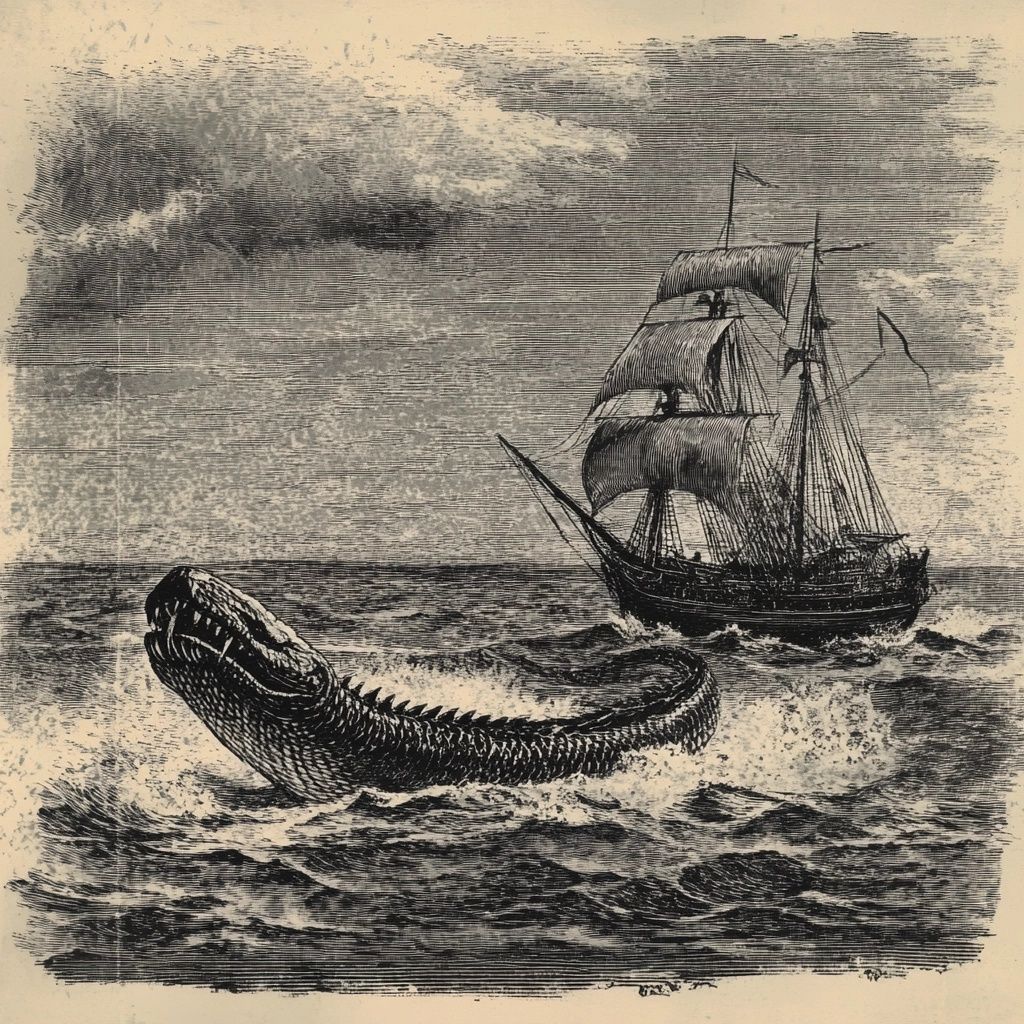
Physical appearance & movement
Eyewitness descriptions painted a vivid picture of the Gloucester Sea Serpent (also called the Cape Ann Sea Serpent). Most witnesses agreed on its massive length, mostly estimating it to be between 80 and 100 feet long.
The body was described as segmented, like a "string of buoys" or kegs and moved with a unique wavy, up-and-down motion.
The creature's head was often compared to that of a horse or a large sea turtle, with some witnesses noting it held its head several feet above the water.
- Size and length: Estimated between 40 to 100 feet, with a body as thick as a barrel in some places.
- Color: Dark brown or black, with a smooth or scaly texture, depending on the lighting and the observer.
- Movement: Its motion was described as both vertical and horizontal, with a caterpillar-like up and down motion that set it apart from typical marine animals.
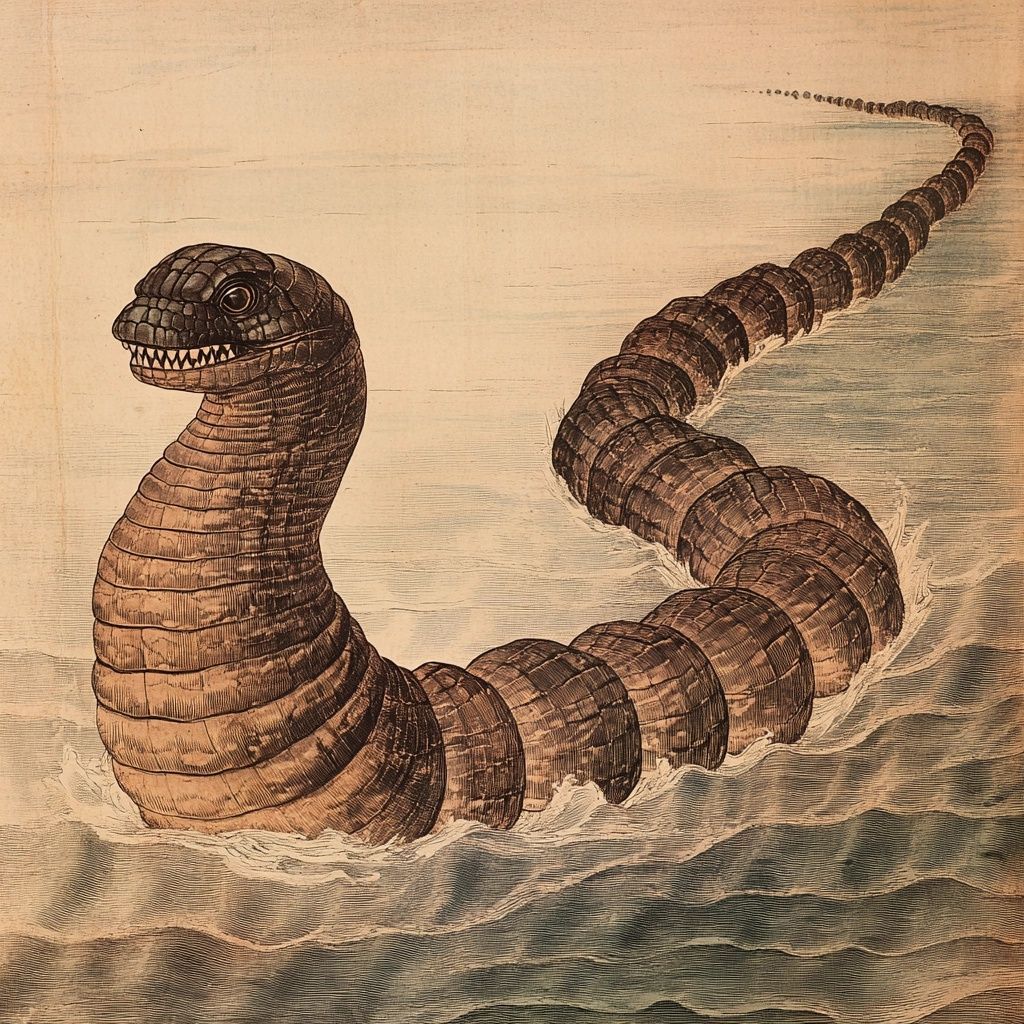
A timeline of sightings (1638, 1817 and beyond)
As early as 1638, Reverend John Josselyn recorded a sighting of a "serpent or snake" in the waters near Cape Ann. This early account laid the foundation for later reports of strange marine creatures in the area.
The most famous string of sightings, however, took place in the summer of 1817, when numerous reports emerged from Gloucester Harbor. It wasn't just one or two people who claimed to see it - dozens of witnesses, from fishermen to respectable townsfolk, shared similar accounts of a creature unlike anything they’d ever seen.
The sightings occurred over several weeks, giving locals ample opportunity to gather evidence and feed the growing excitement.
1638: Reverend John Josselyn reported seeing a serpent-like creature in the waters near Cape Ann, one of the earliest documented sightings in the area.
August 10, 1817: The first major sighting of 1817 took place, with mariner Amos Story spotting the creature from shore.
August 12-14, 1817: Solomon Allen observed the serpent over multiple days, detailing its segmented appearance and incredible speed.
August 14, 1817: Ship carpenter Matthew Gaffney had an especially close encounter, even firing a shot at the creature as it swam near his boat.
Other Nearby Sightings: Reports of similar creatures were also recorded in nearby locations such as Nahant and Plymouth, Massachusetts, adding further credibility to the existence of a mysterious sea serpent in New England waters.
These accounts, were collected by the Linnaean Society of New England, who were a scientific society dedicated to the study of natural history and active between 1814 - 1822.
Eyewitness testimonies: first-hand accounts
Amos Story's view from the shore: On August 10, Amos Story spotted the sea serpent from the shore of Gloucester. He described its head as resembling a sea turtle's, and he watched as it moved swiftly through the water for over an hour.
Solomon Allen's close encounter: Solomon Allen, a shipmaster, observed the creature from a boat over several days. He described the serpent's head as nearly as large as a horse's and noted that it seemed to move both vertically and horizontally. Allen estimated that he saw up to fifty distinct segments or "bunches" along its body.
Matthew Gaffney's shot: Perhaps the most dramatic account came from Matthew Gaffney, who was in a boat only 30 feet away from the serpent. Gaffney fired at the creature, which responded by sinking below the water and reappearing at a distance. He described its head as being the size of a four-gallon keg, and its body as thick as a barrel, moving vertically like a caterpillar.
Reactions & possible explanations
The sightings sparked intense debate in the community (as is always the case in cryptid stories). Many locals were convinced of the sea serpent's existence, which was largely helped by the credibility of the witnesses, who included respected community members and experienced mariners.
And the fact that the scientific Linnaean Society formed a committee to investigate the claims, only added further support to the possibility that this creature might actually be real.
But, skeptics suggested that the sightings could be explained by misidentified marine animals, such as large schools of fish, whales, or even floating logs.
Despite the skepticism, the consistency in the descriptions and the sheer number of witnesses kept the story alive and it is still one of the most documented cryptid stories to grace the world of folklore.
Similar cryptid sea serpents
Similar snake-like sea creatures had been recorded in other parts of the world, most notably:
- the Norwegian Sea Serpent, described by Pontoppidan the Bishop of Bergen, in the 18th century
- Ogopogo, the lake creature of British Columbia, Canada
- Cadborosaurus, a reported creature from the Pacific Northwest first spotted in 1791.
All these sea serpents shared physical traits with the Gloucester serpent, leaving believers to speculate that they are all potentially part of the same serpent family.
"His head appeared full as large as a four-gallon keg; his body as large as a barrel, and his length that I saw, I should judge forty feet, at least."
— Matthew Gaffney, Cape Ann resident
EYEWITNESS TESTIMONY
The Gloucester Sea Serpent continues to capture our imaginations more than two centuries after it first appeared. While skeptics may offer rational explanations, the consistency and number of sightings suggest that something extraordinary really may have been seen off Cape Ann in 1817 (and since).
Was it a yet-undiscovered marine animal or just an elaborate case of mass hysteria? The truth remains hidden beneath the waves, but the legend lives on.
Discover more water cryptid stories here.
Article sources
- Linnaean Society of New England. Report of a Committee of the Linnaean Society of New England Relative to a Large Marine Animal Seen Near Cape Ann, Massachusetts in August 1817. Gloucester: Linnaean Society, 1817
- Gould, Charles. Mythical Monsters. London: W. H. Allen & Co., 1886



